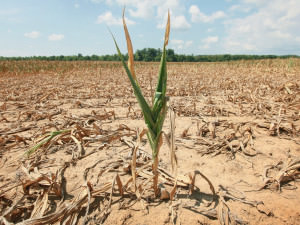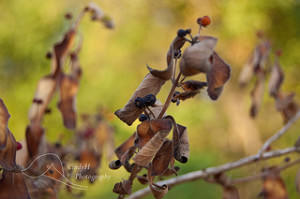The Effect of Rising Temperatures on Food Staples
Crops of food staples could be in danger around the world, leading to increased hunger in developing nations
By: Sarah Hartwick, Staff Writer
On coffee plantations around the world, the temperatures are already changing. The weather has become increasingly unpredictable; the heat of the tropical valleys is creeping up into the cool highlands. The delicate cycle of wet and dry seasons, essential for a healthy coffee tree, has been getting wetter and wetter.
The long, green coffee leaves are turning brown, “rusting,” as a fungus that has always died in the cool, dry weather survives to ruin plantation after plantation.
A study done in 2012 by the Royal Botanic Gardens in London, England warns that by 2080, Arabica coffee plants could be entirely extinct in the wild. We’d still be able to rely on domesticated varieties, but the study warns that prices would go up and quality would go down.
And your morning pick-me-up isn’t the only thing in danger.
As the world gets warmer, the foods we eat most often, including wheat, rice, and corn, will become more difficult to grow.
The International Food Policy Research Institute (IFDRI), an independent, U.S.-based think tank, conducted a study in 2010 in which showed that while climate change will affect different regions of the world in different ways, overall, “global cereal production will be between 3.2 and 8.2 per cent lower with climate change than in a perfect mitigation scenario, where all greenhouse gas emissions are halted and the inertia in the climate system is overcome.”
In an online analysis, of the report Food Security, Farming, and Climate change to 2050, IDFRI research fellow Nicholas Magnan writes that according to the report, wheat production worldwide could drop between five and ten per cent, maize or corn production between two and 10.5 per cent, and rice four per cent, depending on the climate scenario. An earlier study by the same institute found that in Sub-Saharan Africa and South Asia, rice production could drop by as much as 15 per cent.
While coffee farmers dread the increased rain, those growing wheat and corn are likely to suffer from hot, dry summers. Rice, often grown in low-lying regions like Vietnam’s the Mekong River delta, is more likely to succumb to flooding.
[pullquote]A study done in 2012 by the Royal Botanic Gardens in London, England warns that by 2080, Arabica coffee plants could be entirely extinct in the wild.[/pullquote]
Grains aren’t the only staple food to feel the heat; soy plantations are also vulnerable to rising temperatures. The World Wildlife Fund estimates that by the year 2070, the area of land suitable for soy production could drop by as much as 60 per cent if faced with drier, hotter summers. According to a 2009 research paper by Wolfram Schlenkera and Michael J. Roberts, soybean plants have a temperature threshold of about 30 degrees Celsius. After that point, the plants yield drops dramatically.
The U.S. government reports that soy is the second most-planted field crop in America, ranking just below corn, bringing in over $37 billion US for farmers annually.
In order to salvage as much agricultural land as possible, studies suggest that adapting growing seasons to suit a hotter climate, as well as taking measures to avoid eroding soil could be useful, as well as changing farming methods to be more conservative, saving as much water and energy as is possible.
One study, entitled Climate Change: Can Wheat Beat the Heat?, published in Agriculture, Ecosystems and Environment in 2008, puts forth the conclusion that in addition to changing farming practices around the world, it could also be beneficial for scientists to focus on breeding strains of wheat that could withstand high temperatures and drought conditions, ensuring income and food for people around the world.
“Wheat breeders should start genetically enhancing the crop to maintain yield under higher temperatures using all available means in the tool kit. In this way, they will assist in building cropping system resilience to the global warming hazards that could jeopardize the livelihoods of resource-poor farmers who depend on the wheat harvest,” the study says.
Currently, genetically modified wheat has not been approved for use Canada. The issue has been enormously divisive in the U.S., where agricultural retailer Monsanto has developed wheat strains designed to the company’s own weed-killing products.
New Foods
Forty years from now, according to the IFPRI report, people will most likely still eat the same kinds of grains they eat now – just less of them overall. People in developed countries will eat 6.8 to 12.2 per cent less cereal; in developing countries, people will likely eat 7.6 to 12.1 per cent less.
Magnan writes that, “While it appears people will consume staples in the same proportions with climate change or with perfect mitigation, they will consume slightly less of them. For those who eat meat, it does not seem that the amount they eat alongside their staple of choice will be lower with climate change.”
This, he points out, is despite the fact that in every studied climate scenario, grains are each more expensive than if climate change was completely halted.
Although the developed world might be able to pay the extra money to keep grains on the dinner plate, the prognosis for the developing world isn’t so good. According to research published in 1996 by the Food and Agricultural Organization of the United Nations, although globally, grain production might not see a decrease beyond single digits, developing nations are likely to see a decrease of ten per cent, on average.
And according to the research report, “if climatic change were to retard economic development beyond the direct effects on agriculture in the poorer regions, especially in Africa, then overall impacts could be sizable.
“This loss of production in developing countries, together with rising agricultural prices, is likely to increase the number of people at risk of hunger, in the order of five to 15 per cent in the less severe climate scenarios, and [roughly] 50 per cent in [more severe scenarios].”
Alternative Heat-Resilient Edibles
So what is the world going to eat when grain and soy production comes under threat? Research has revealed that the crops with the potential to prosper are those already grown in hot regions.
Plantains and certain species of banana, already popular staples in much of the world, grow well in the heat and could take a larger role in the future.
One food that’s been lauded for its ability to not only beat the heat, but to thrive in it, is the cassava – a humble tuber most often grown in Southeast Asia, Africa, and Latin America. For these regions in particular, the cassava might be what fills in for other staple crops in the face of climate change. Scientists have dubbed it the “Rambo root” of agriculture, for its resistance to climbing temperatures.
A 2012 study published in the scientific journal Tropical Plant Biology found that “cassava is potentially highly resilient to future climactic changes and could provide Africa with options for adaptation whilst other major food staples face challenges.”
But even the cassava has a weak point in the face of global warming; although yields actually increase in hotter weather, the diseases that destroy the roots also like the heat. The Global Cassava Partnership estimates that each year, at least 50 million tons of cassava roots are lost to disease. Sharing research in the hopes of developing a disease-resistant and more nutritious cassava strain is one of the partnership’s roles in the global community.
Andy Jarvis is a climate change scientist with the International Centre for Tropical Agriculture and one of the co-authors of the study on cassava. Speaking at a conference held by the Global Cassava Partnership, he said that, “Research shows that [the cassava] will brush off the higher temperatures. Its potential is tremendously exciting. But now we have to act promptly on the research, as more pests and diseases are manifesting themselves because of climate change.”
Another crop that does well in warm weather and poor, dry soils is the cowpea, a nutritious legume grown most commonly in West Africa, India, and in the southern U.S., where they’re known as black-eyed peas.
According to a report by science news website phys.org, scientists are already working on breeding cowpea plants to have both a high resistance to drought and a high yield. With soy poised to reach the precipice of ideal temperatures in the coming decades, the cowpea could provide a viable, protein-rich replacement. And alongside cassava chips and fried plantains, cowpeas might soon have a special place at the global dinner table.
Bio: Sarah Hartwick is a freelance writer and an avid traveler. In her spare time, she works with Schools Building Schools, a growing NGO that’s striving to spread access to education throughout Sub-Saharan Africa. Check out her blog to follow her adventures around the globe.
Sources:
Environmental Protection Agency
Generation Challenge Programme
Global Cassava Partnership
International Food Policy Research Institute: Will climate change what people eat?
International Food Policy Research Institute: Climate Change – Impact of Agriculture and Costs of Adaptation
Phys.org
Proceedings of the National Academy of Sciences of the United States of America
Royal Botanic Gardens Study
Photograph Courtesy of Natalie H.
Photograph Courtesy of NPR
































Share the post "The Effect of Rising Temperatures on Food Staples"